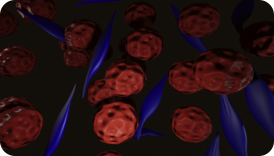Uveal melanoma is the most common intraocular cancer in adults. It arises from melanocytes in the uveal tract (iris, ciliary body and choroid). Treatment of the primary tumor (in the eye) involves radiation or enucleation (removing the eyeball). Cancer cells can metastasize (spread to distant organs) years after treatment of the primary tumor. Unfortunately, there is no effective treatment against metastatic uveal melanoma.

Uveal Melanoma
Our research focuses on
1. Understanding why do certain tumors have a higher tendency to spread more than others.
2. Identifying the molecular mechanism that drives tumor progression.
3. Developing pre-clinical models that can be emlpoyed to study tumor-intrinsic and extrinsic mechanisms of metastasis.
4. Identifying novel therapeutic targets that can be employed to treat primary and metastatic uveal melanoma.
5. Developing non-invasive biomarkers that can be used for diagnosis, prognostication and metastatic surveillance.

By integrating patients' derived models, high-dimensional clinical data, and functional experiments, we recently discovered a surprising and novel molecular mechanism, in which a subpopulation of cells within the tumor stop expressing a critical epigenetic regulator initiating a series of events that change cell morphology and alter large transcriptional programs with a predilection for metastasis (Nature Communications, 2021).
Post-doctoral fellows and students interested in cancer genomics, epigenetics and biomarker design are encouraged to apply.
